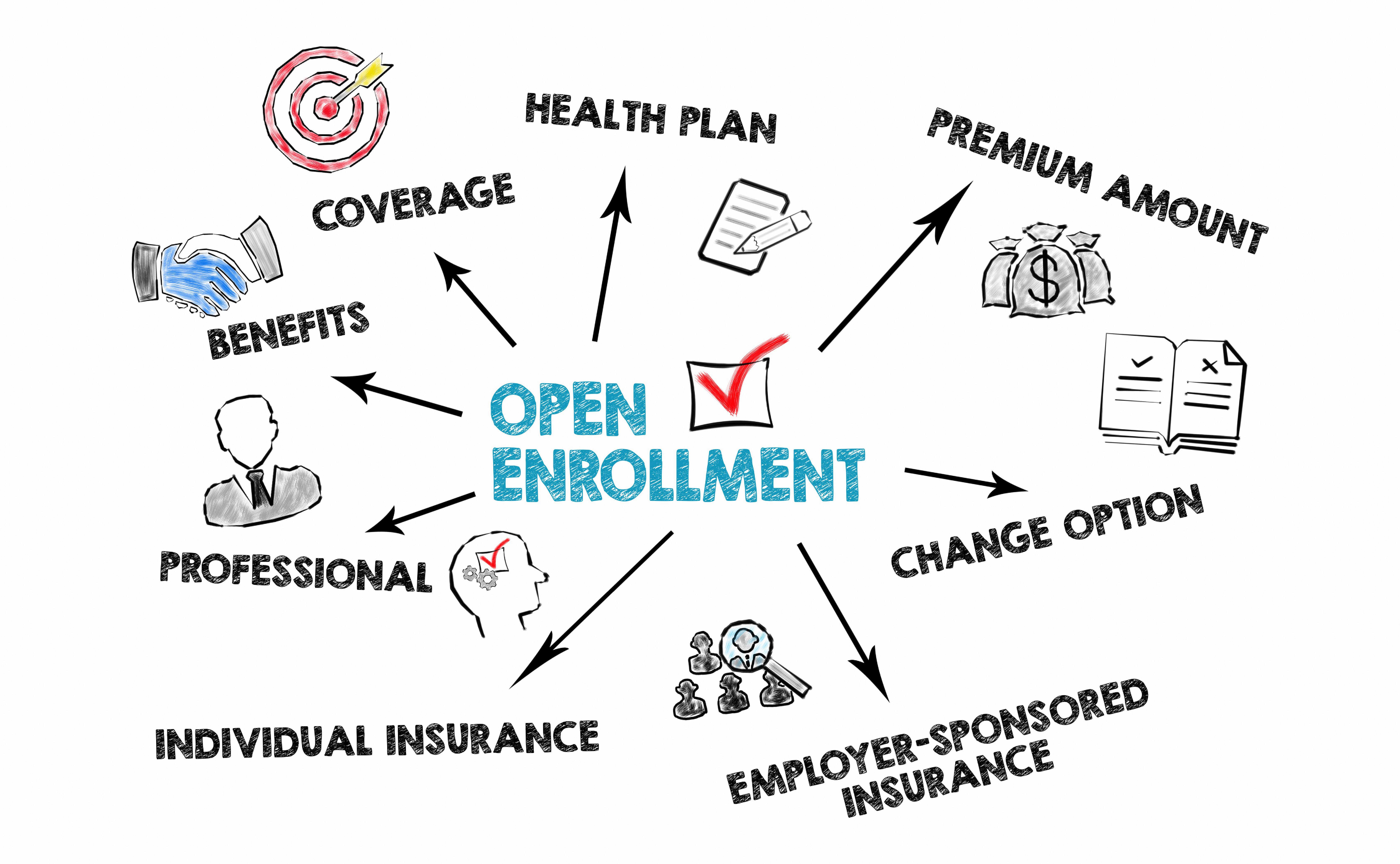Fall is open enrollment time at most companies. Employees are confronted with many choices that hold sway over their health, finances, and overall well-being. This time allows employees to assess new benefit options while considering whether their current selections align with their evolving life circumstances. Since employees typically have only one chance a year to review benefits, it’s paramount to ensure that you’re making the most appropriate decisions for you and your family. Here are the key considerations employees should keep in mind during this year’s open enrollment:
Medical Insurance Options:
Selecting the most appropriate health insurance plan is crucial for employees’ peace of mind and financial security. Employees need to carefully assess the pros and cons of different plans, including HMOs, PPOs, and high-deductible health plans. Considerations like monthly premiums, deductibles, co-pays, and coverage for specific healthcare services all play a role in this decision-making process. Employees with pre-existing conditions should ensure that their essential treatments and medications are covered. Additionally, it’s vital to confirm whether their preferred doctors and hospitals are in-network to minimize out-of-pocket costs. If dental and vision insurance options are available, employees should consider enrolling in these benefits. If premium options are offered, it’s best to weigh whether the additional annual cost is worth the higher levels of coverage.
Flexible Spending Accounts (FSAs) and Health Savings Accounts (HSAs):
Budgeting for healthcare expenses is a crucial part of open enrollment. Flexible Spending Accounts (FSAs) allow employees to allocate pre-tax funds for qualified healthcare expenses, while Health Savings Accounts (HSAs) are tailored for those in high-deductible health plans. The Dependent Care FSA is a favored choice among various FSA options, covering childcare expenses like daycare, summer camps, and elder care. The Limited Purpose FSA is often used with a Health Savings Account (HSA) to cover dental and vision costs. Regarding HSAs, the best approach is to maximize annual contributions and invest these funds for future healthcare needs while paying current health expenses out of pocket. To leverage these tax-advantaged accounts, employees should assess their expected healthcare expenses, maintaining a balance between immediate needs and long-term savings, all while keeping contribution limits and eligible expenses in mind. Unlike HSAs, which can be rolled over if not used, FSAs are use it or lose it, so be sure not to contribute more than you think you’ll spend each year.
Life and Disability Insurance:
As family sizes expand and responsibilities increase, the importance of life and disability insurance becomes increasingly important. Open enrollment allows employees to evaluate the sufficiency of these coverages, ensuring that they align with their current family size, financial obligations, and individual circumstances. Employees are encouraged to accept employer-paid life insurance and carefully consider the necessity for additional voluntary life insurance. Additionally, employees should thoroughly examine the disability insurance options. Discovering the extent of disability coverage after the need arises is far from ideal. If possible (not all companies offer the option), employees should pay for disability premiums with after-tax dollars to avoid paying tax on the disability benefits if needed. Lastly, it’s also essential to periodically review and update beneficiaries to ensure that loved ones are financially secure in case of the unexpected.
Employee Assistance Programs (EAP) and Wellness Initiatives:
Maintaining well-being encompasses not only physical health but also mental and emotional health. Employee Assistance Programs offer valuable counseling services, financial planning, educational assistance, and other forms of support that can be highly beneficial. Wellness initiatives present opportunities for employees to enhance their lifestyle and work toward a healthier life. Employees are encouraged to explore these options. However, as a general guideline, if the out-of-pocket cost of these services is minimal, employees should consider paying for them using their funds rather than enrolling in new benefits. The only exception to this rule is when identity theft services are offered. The cost of rebuilding your financial life after a significant identity incident can amount to thousands of dollars and require hundreds of hours, making investing in such services worthwhile.
Open enrollment periods allow employees to pause, carefully consider, and evaluate their company’s benefits. This is not a decision to be rushed. The choices made during this period will significantly impact health, financial stability, and overall quality of life. It’s a time to make well-informed decisions, and it’s advisable not to wait until the last day to make your benefit selections. By thoughtfully considering the essential factors influencing each benefit choice, employees can navigate open enrollment with confidence.

